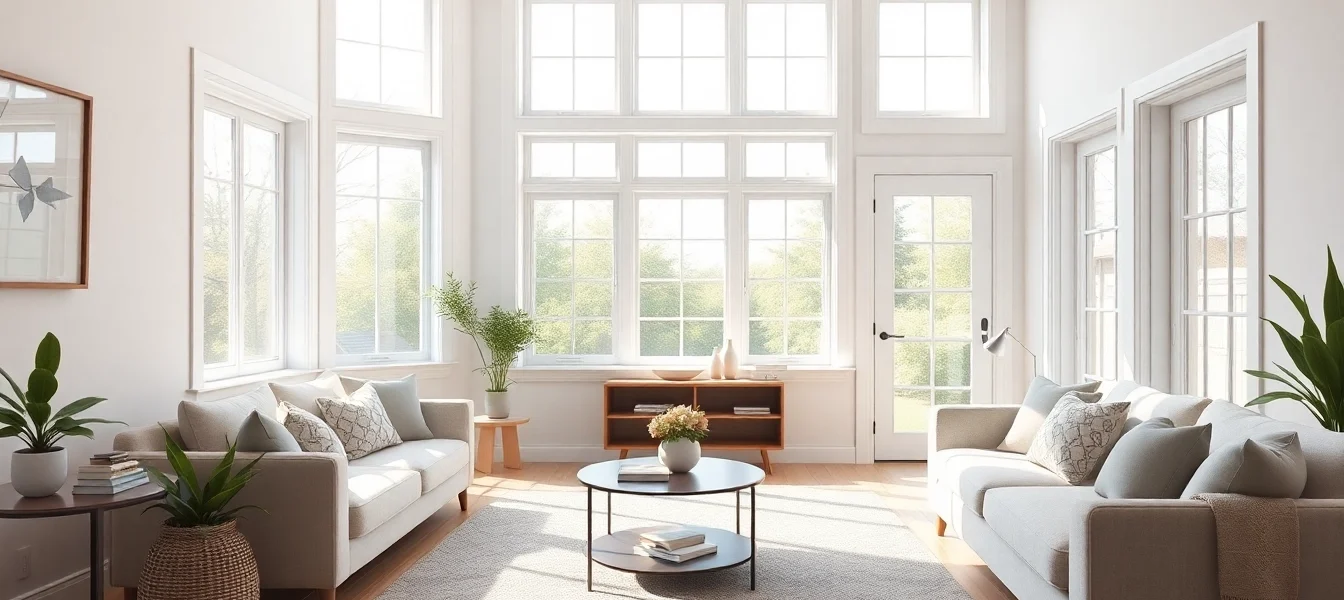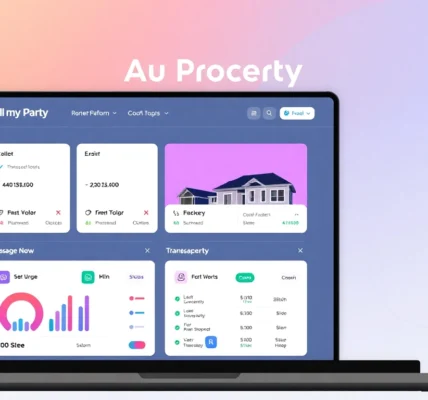Window and Door Replacement: Your Step-by-Step Guide to Superior Comfort and Efficiency
Setting the right expectations for a home upgrade starts with understanding the lifecycle of window and door replacement. Beyond curb appeal, these replacements influence comfort, security, and ongoing energy costs. For homeowners planning a long-term upgrade, the term window and door replacement covers design choices, measurement practices, installation considerations, and maintenance that protect your investment over time. This guide draws on industry patterns—from in-home consultations to performance metrics—without leaning on a single product, so you can approach your project with clarity and confidence.
Understanding Window and Door Replacement: Why It Matters
Cost considerations and ROI
Replacement projects involve upfront costs for products and installation, but a well-planned program delivers measurable returns. Vinyl and composite framing often provide lower initial costs with solid long-term performance, while wood frames offer aesthetic warmth with higher maintenance demands. Doors vary widely by material, insulation, and security features. Average home projects, depending on scope, can range from a few thousand dollars for a handful of replacements to a broader program that touches entry doors, back doors, and multiple windows. The ROI hinges on energy savings, reduced maintenance, and increased resale value. When you calculate payback, factor in annual utility reductions, improved comfort, and any tax incentives or rebates available in your region. A strategic, phased approach—prioritizing high-traffic, highly insulated spaces first—often yields the most practical ROI while spreading the cost over time.
Energy Efficiency Benefits in Window and Door Replacement
Energy performance is more than a label on a product; it’s the result of a system that includes materials, glazing, and construction quality. Key metrics include U-Factor (how well a window prevents heat loss) and Solar Heat Gain Coefficient (SHGC, how much solar energy is transmitted). Lower U-Factors and optimized SHGC reduce heating and cooling loads, especially in extreme climates. Modern replacements also emphasize tight seals, low-emissivity coatings, and inert gas fills that minimize heat transfer. When paired with proper installation, these features dramatically cut comfort disparities between rooms and reduce the load on HVAC equipment, leading to lower bills and a more consistent indoor environment.
Timing and Prioritization for Replacement Projects
Smart planning aligns with seasonal weather and life events. Start with components that directly impact comfort and security—entry doors and windows in living spaces or bedrooms—then address areas with obvious wear, drafts, or moisture problems. If energy bills are a concern, pilot programs that upgrade the most thermally stressed zones first can yield noticeable savings early. For households in rental properties or multi-unit buildings, coordinating replacements to minimize disruption and maximize energy performance across units can improve overall efficiency and tenant satisfaction.
Measuring for Window Replacement and Door Replacement
Accurate Measurements and Permits
Precise measurements begin with the rough opening and include width, height, and depth. Measure at multiple points (top, middle, bottom; left and right sides) to capture irregularities, then document any obstructions, trim conditions, or siding profiles. For doors, check jamb depth, hinge placement, and the sill condition. Some jurisdictions require permits for structural or cosmetic changes, especially when altering openings or framing. Maintaining detailed records simplifies ordering, avoids fit issues, and streamlines any potential inspections or warranty validations.
DIY vs Professional Installation for Window Replacement
DIY projects can be feasible for limited, simple replacements with compatible product lines, provided you have precise measurements and the right tools. However, professional installation often yields better long-term performance through proper flashing, sealing, and alignment—key factors for preventing air leakage and moisture intrusion. Installing doors correctly is particularly critical for weather sealing and security. If you’re unsure about framing modifications, flashing details, or building-code requirements, a licensed installer can save time, reduce callbacks, and preserve warranty coverage.
Warranties and Service Plans
Warranties typically cover the product’s defects for a period that ranges from 10 to 20 years for glazing and a varying span for frames, with separate installation warranties. Service plans may extend coverage to routine maintenance, glass seal failures, and hardware replacements. Before purchase, review what is included, what voids coverage (such as unauthorized alterations), and whether the warranty transfers if you sell the home. A clear warranty enhances peace of mind and can be a compelling factor in the overall value proposition of your replacement project.
Energy Efficiency for Window Replacement and Door Replacement
U-Factor, SHGC, and Air Sealing for Window Replacement
Choosing products with favorable U-Factors and SHGC values is just part of the equation. Proper installation and air sealing around the frame are equally critical. Gaps and misaligned sashes can erode the expected energy savings even when you select high-performance glazing. Consider options like double- or triple-pane glass, low-E coatings, and gas fills for climate-specific performance. A tightly sealed installation minimizes drafts, reduces radiant heat loss, and stabilizes indoor temperatures across seasons.
Ventilation and Moisture Control
Ventilation remains essential for indoor air quality, even as you pursue tighter envelopes. Balance energy efficiency with controlled ventilation to prevent moisture buildup and maintain healthy humidity levels. This may involve integrated ventilation solutions, adequately sized operable sections, and moisture-tolerant materials in areas prone to condensation. The goal is to maintain comfort without compromising structural integrity or indoor air quality.
Impact on HVAC and Comfort Zones
Better windows and doors reduce HVAC runtime, particularly during peak heating and cooling hours. This translates to steadier temperatures in comfort zones—typically living spaces and bedrooms—while reducing hot or cold spots. By lowering peak loads, you can either downsize equipment or improve system efficiency, supporting longer system life and lower energy bills. The result is a more balanced home environment with fewer temperature-driven complaints and improved overall comfort.
Materials and Styles for Window Replacement and Door Replacement
Frame Materials: Vinyl, Wood, Aluminum
Frame material choice influences cost, maintenance, aesthetics, and performance. Vinyl is cost-effective, weather-resistant, and easy to maintain, making it a popular choice for many replacements. Wood frames offer timeless beauty and excellent insulation when properly finished but require regular maintenance. Aluminum frames bring strength and slim sightlines, though they may conduct more heat or cold if not paired with thermal breaks. Many modern designs use composite or fiberglass frames that blend durability with interior warmth, offering a balanced solution for varied climates.
Glass Options for Window Replacement
Glass selections range from standard double-pane to advanced triple-pane configurations, with optional low-emissivity coatings, reflective tints, and laminated or tempered glass for safety. For homes in hot climates, high-performance coatings and inert gas fills reduce heat gain; in cooler regions, coatings that preserve interior heat are advantageous. The right glass choice depends on climate, orientation, and shading, as well as whether you prioritize sound attenuation or security features in addition to energy performance.
Hardware, Finishes, and Curb Appeal
Finish options—such as paintable vinyl, wood stains, or powder-coated aluminum—affect exterior aesthetics and maintenance needs. Hardware choices (handles, hinges, and locks) provide finishing touches that tie the project to your home’s style. Thoughtful selection of color and hardware can significantly impact curb appeal, resale value, and the perceived quality of your replacements.
Maintenance and Longevity of Window Replacement and Door Replacement
Cleaning, Lubrication, and Weatherstripping
Regular cleaning of tracks, sashes, and seals prevents buildup that can impede operation. Lubricate moving parts with manufacturer-recommended products and inspect weatherstrips for wear, replacing them before drafts become noticeable. Periodic caulking around exteriors helps maintain the integrity of your enclosure, supporting consistent performance and energy savings.
Troubleshooting Common Window Replacement Issues
Common issues include sticky hardware, misaligned sashes, and condensation between panes. Start with simple fixes—tighten hinges, reseal gaps, or replace worn weatherstripping. For glazing-related condensation, identify interior humidity sources or ventilation gaps. If drafts persist after installation, revisit flashing details and sealant integrity. Persistent problems may indicate installation defects or material failure that warrants professional inspection and potential warranty remedies.
Seasonal Maintenance Calendar
Adopt a seasonal routine: inspect seals and hardware in spring, clean and lubricate in summer, reseal and verify drainage in fall, and test operation plus weatherstripping before winter. Align maintenance tasks with local climate patterns to maximize efficiency and comfort, ensuring your windows and doors perform reliably year after year.


